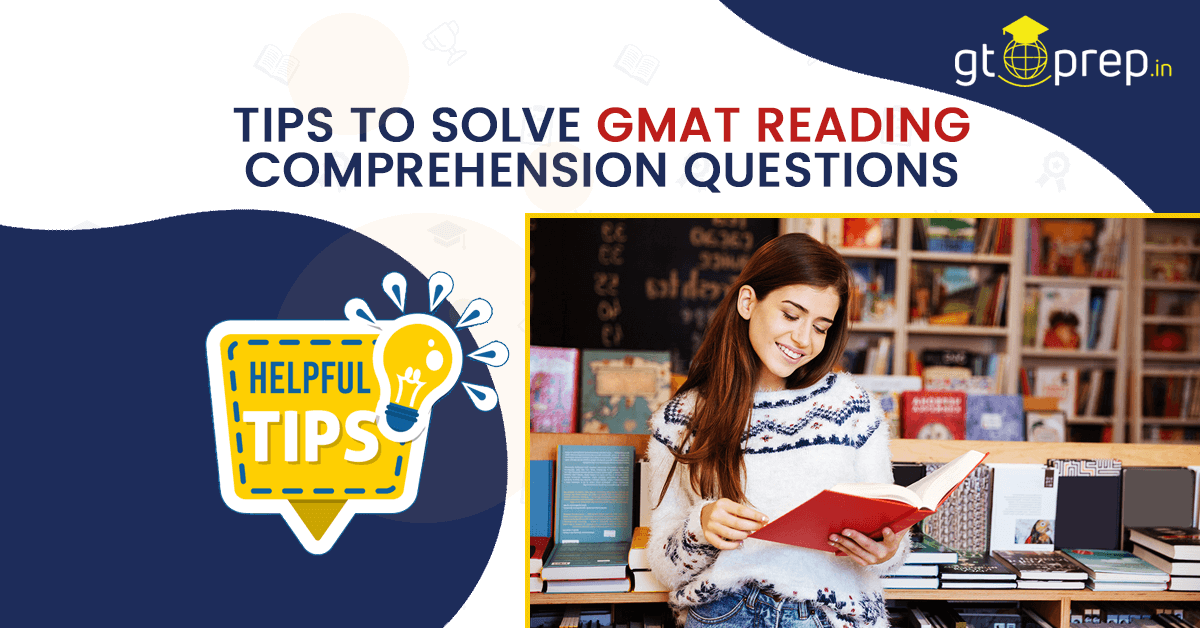Any student feels intimidated when a reading comprehension question appears on the screen. Even those who have a reading habit find comprehensions less interesting in GMAT. Here we came with a fun and simple approach to master the GMAT Reading Comprehension Questions.
GMAT Reading Comprehension Overview:
GMAT Verbal section has 36 questions, out of which 9-16 questions will be for reading comprehension. A minimum of 3-4 passages will appear on the GMAT test with 3-4 questions each. That means one-fourth of the verbal section is comprehension passages. One can expect three short passages with 200-250 words and a long passage with 300-350 words.
These passages are not something to test neither your intellectual level nor knowledge on all things to answer. GMAT tests the ability to comprehend the passage and answer the questions from that particular context. No special knowledge outside the passage content is required.
GMAT Reading Comprehension Question Types:
Having an idea of what to expect on exam day always leaves an advantage to you. Finding out what all question types will appear in GMAT Reading comprehension passages is one of the best tips to ace GMAT Verbal section.
1. Author’s Idea
This is the most common question for each passage. This generally questions what the author’s main point is or what the author is trying to convey. You should be choosing the appropriate context that summarizes the whole passage.
2. Details or Supporting Ideas
This is a straightforward question type in GMAT, just to check what are the supporting ideas r details mentioned in the passage.
3. What does that mean by the Author?
Here comes the tricky one. This is an indirect question. That means, the author mentions a line that is not directly telling something and you should find that something here.
4. Out of Context
The out-of-context question type is a critical question as you need to understand the author first. This type has a question that is out of context and you will be asked how the author will answer that. Tricky, isn’t it?
5. Style and Tone
This is again a straightforward question type, where you need to understand the style and tone of the author in the passage. Most of the time, you can see “critical” or “enthusiastic” words in the options.
6. Logical Structure and Organization
This is kind of a sub-type for the author’s idea question type. The same kind of question will be asked differently.
How to Solve GMAT Reading Comprehensive Questions?
Here comes the fun part. We know solving comprehension passages is a daunting job but the first thing to make it easier is to find a way to make it interesting.
Tip#1: “Reading” Comprehensions guidelines
A direct answer given in the title is “Read first”. GMAT is a kind of test, where the passage questions will be displayed as a split-screen. So the passages will be displayed on the left side and the question will be on the right. Only one question will be displayed at once. And there is no going back to the previous question in GMAT.
So, it is better to read first and then start answering questions. Avoid the skimming method for a complete picture of the essay. This kind of study plan for GMAT help you achieve dream score.
Tip #2: Watch out for the ‘Pace’
The major concern for most of the students is time management when it comes to passages. It might be slow reading or not being able to grasp immediately, or anything else. But spending a lot of time on passage reading is not the right thing to do.
More Practice is the key to peddle up in answering the passages.
Tip #3: Understand “Synonyms”
Synonyms play a key role in GMAT verbal scores. You need to understand the idioms and phrases given in the passages to answer them. But, how? Make a habit of reading magazines, journals, books, etc. to understand the contextual idioms or phrases. This one tip can help you to score 720+ on GMAT test.
Tip #4: Avoid Jargon trap
In the game of GMAT RC, jargon traps make you stop at a place and waste your time. On a simpler note, sometimes there might be lengthy words or words that you never heard in a lifetime. Don’t start thinking about it and try to understand the meaning. Just remember it with a shortcut or abbreviation to answer the questions.
Tip #5: Have a Mental Sketch
This is an unfailing strategy to answer reading comprehension in the GMAT exam. After reading the complete passage, have a mental picture of the summary with key details. It is always suggested to write down key points or meaningful details of idiomatic expressions for a quick review.
Bonus Tip: Head with “main point” in the head. Start reading with the main point in mind, for avoiding diversions of the concept. Be on the track and understand the rest. For more tips from experts, check our GMAT Coaching sessions.



